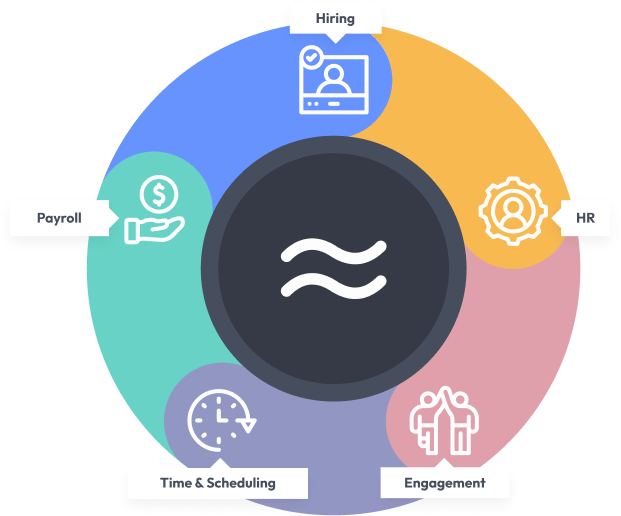How to Hire Assistant Buyers: A Retail Owner’s Guide to Building a Winning Team
Let’s be real—if you run a retail business, you know the assistant buyer position is the backbone of your merchandise operation. But figuring out how to hire assistant buyers who’ll thrive (and stick around) is trickier than it sounds. Whether you’re trying to find retail staff for a single store or recruit assistant buyers for a growing chain, the process can feel like searching for a needle in a haystack—except the haystack keeps moving.
Why Assistant Buyers Matter More Than You Think
Here’s the thing: an assistant buyer is more than just a “retail assistant.” They’re your eyes and ears on the sales floor, your early warning system for trends, and your secret weapon against inventory headaches. High turnover rates in retail and hospitality can cost you thousands per year—not to mention the stress of constant retraining. So, hiring right the first time isn’t just smart; it’s essential for your bottom line.
If you ask me, the best assistant buyers have a sixth sense for what customers want (even before customers know it themselves). But how do you spot that talent—and keep it?
The Real Cost of Getting It Wrong
- Employee turnover in retail can eat up profits faster than you can say “seasonal markdown.”
- Replacing a single front-line employee can cost nearly $6,000 on average.
- Turnover isn’t just about money—it disrupts team morale, slows down operations, and impacts customer experience.
Step One: Define the Assistant Buyer Position Clearly
You wouldn’t buy inventory without knowing what sells. The same goes for hiring: start with a clear job description. Not just a list of duties, but a snapshot of what success looks like in your store. For practical tips, check out this guide on job descriptions.
What Makes a Great Assistant Buyer?
- Analytical skills: They need to crunch numbers and spot trends.
- People savvy: Communication with vendors, managers, and floor staff is daily business.
- Organizational chops: Juggling orders, deliveries, and price changes takes serious multitasking.
- Adaptability: Retail moves fast—your team should too.
If you’re not sure what to include in your posting, these job posting examples can give you a head start. And don’t forget: calling out benefits and growth opportunities in your ad (see these tips) helps attract top talent.
Sourcing and Screening: Where Do You Find Retail Staff Who Fit?
Honestly, it’s not just about “putting up a sign” anymore. Today’s best candidates are scrolling through their phones—sometimes between shifts at their current job! So, you need to meet them where they are.
Modern Recruiting Channels That Work
- Indeed for Employers: Reach thousands of hourly job seekers instantly.
- Instagram recruiting strategies: Yes, social media works for finding retail assistants!
- Proactive sourcing methods: Don’t wait for applicants—find them first.
- Free job boards: Cast a wide net without breaking the bank.
- Creative job postings: Stand out from the crowd with personality and clarity.
If you’re still relying on paper applications or outdated systems, consider how much faster you could move with hiring automation tools. Platforms like Workstream help you screen, schedule interviews, and communicate—all from your phone. That’s not just convenient; it’s a game-changer when you need to recruit assistant buyers quickly during busy seasons.
Screening for Fit—Not Just Skills
The best resume in the world won’t matter if the candidate can’t handle the pace or culture of your store. Use behavioral interview questions (here are some great cultural fit interview questions) to dig deeper. And don’t forget motivational interviewing techniques—these tips can help you uncover what really drives your applicants.
Onboarding and Retention: Keep Your Assistant Buyers Engaged
You’ve found your new hire—now what? Too many businesses lose great people in the first 90 days because onboarding is rushed or confusing. According to onboarding best practices, structured training and clear communication are key.
The Power of Effective Onboarding
- Onboarding templates: Streamline paperwork and set expectations from day one.
- Digital onboarding platforms: Make compliance easy and reduce manual errors.
- Flexible scheduling tools: Help employees balance work and life—boosting retention.
- Competitive benefits packages: Even part-time perks can tip the scales for hourly workers.
- Hourly worker benefits examples: See how leading brands keep staff happy.
If you’re tired of losing good people to burnout or boredom, take a page from companies that prioritize engagement—this research on young hourly workers is eye-opening. And if scheduling headaches are driving folks away, digital solutions like Workstream can help you reduce turnover by half—saving you time and money every month.
Compliance and Legal Details (Don’t Skip This!)
Nobody likes paperwork, but keeping accurate records is non-negotiable. The Department of Labor has clear guidelines on wage recordkeeping requirements. Plus, digital HR platforms make it easier to stay compliant and avoid costly mistakes—think $25K per year saved on lawsuits and fees. (Disclaimer: Always consult with your legal advisor for specifics.)
Pitfalls to Avoid When You Hire Assistant Buyers
I’ve seen even seasoned owners trip up on these common mistakes:
- Rushing the process: Filling seats quickly is tempting—but costly if you hire the wrong fit.
- Poor job descriptions: Vague postings attract vague candidates. Be specific!
- Lack of onboarding: Throwing new hires into the deep end almost guarantees turnover.
- No feedback loop: Failing to check in means missing red flags—and opportunities for growth.
- Ignoring culture: Skills matter, but so does attitude. Culture fit drives long-term success (see this study on organizational culture and turnover intention).
If you want more ideas on how to retain great staff, this deep dive into robust retention strategies is worth your time. And if you’re curious about what makes employees truly committed, check out these five traits of committed employees.
The Bottom Line: Hiring Assistant Buyers Is About People—And Process
No two stores are exactly alike, but every successful retailer knows that hiring (and keeping) great assistant buyers is a mix of art and science. Use technology to streamline your process, but never lose sight of the human touch—after all, relationships are what make retail tick.
If you’re ready to modernize how you find retail staff or recruit assistant buyers, consider tools like Workstream’s hiring automation suite. It’s built for hourly businesses like yours, helping you cut turnover by half and reduce time-to-hire dramatically. And hey—less paperwork means more time building relationships with both your team and your customers. Isn’t that what owning a business is really about?
Want More Tips on Retail Hiring?
- Explore our guide to restaurant hiring strategies
- Dive into these job posting examples for hourly roles
- See how leading brands use automation to hire faster and smarter
- Discover why flexible pay options matter in our post on instant pay access for hourly workers
- If you need help now, reach out via our contact page for personalized support






